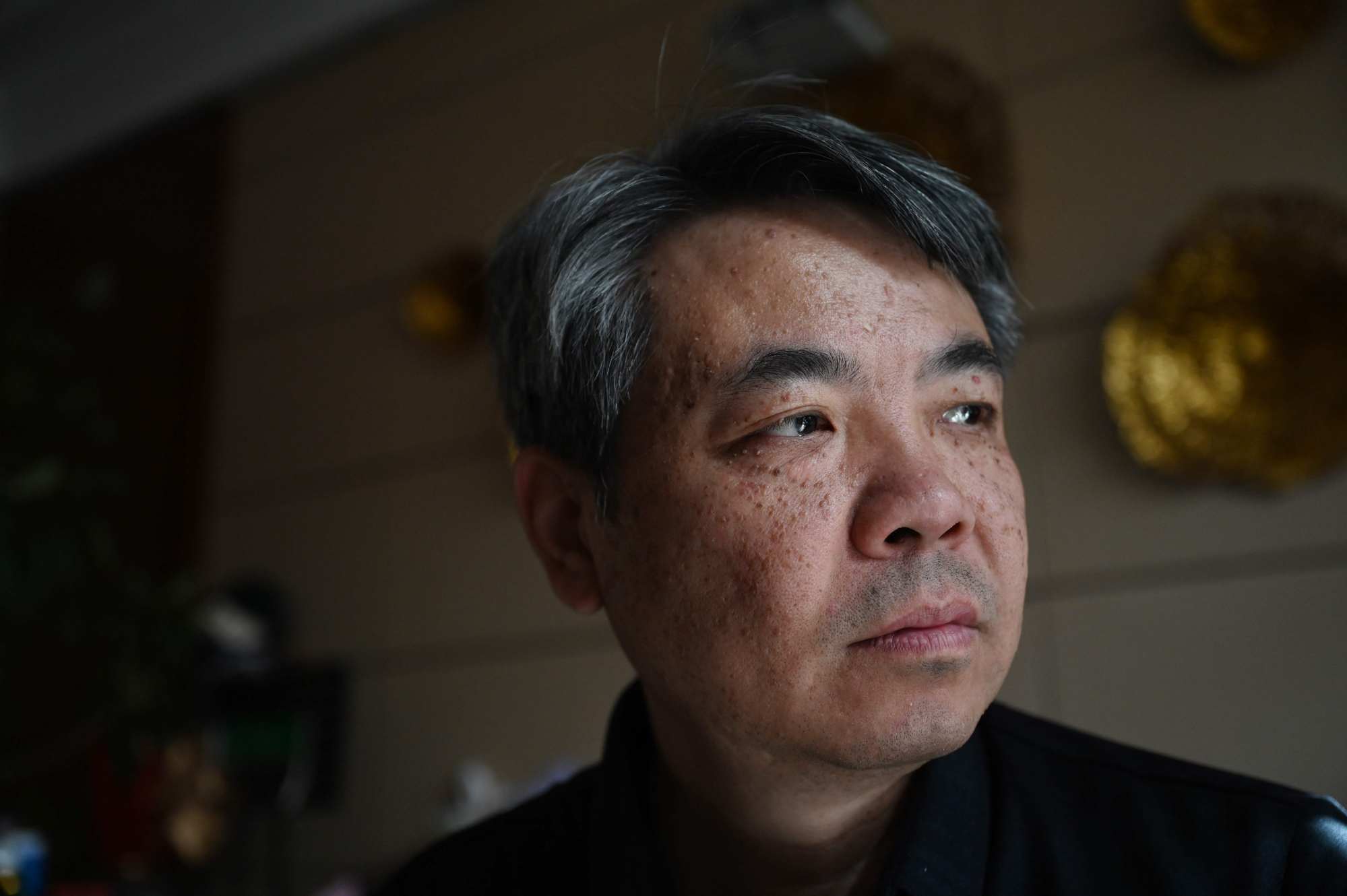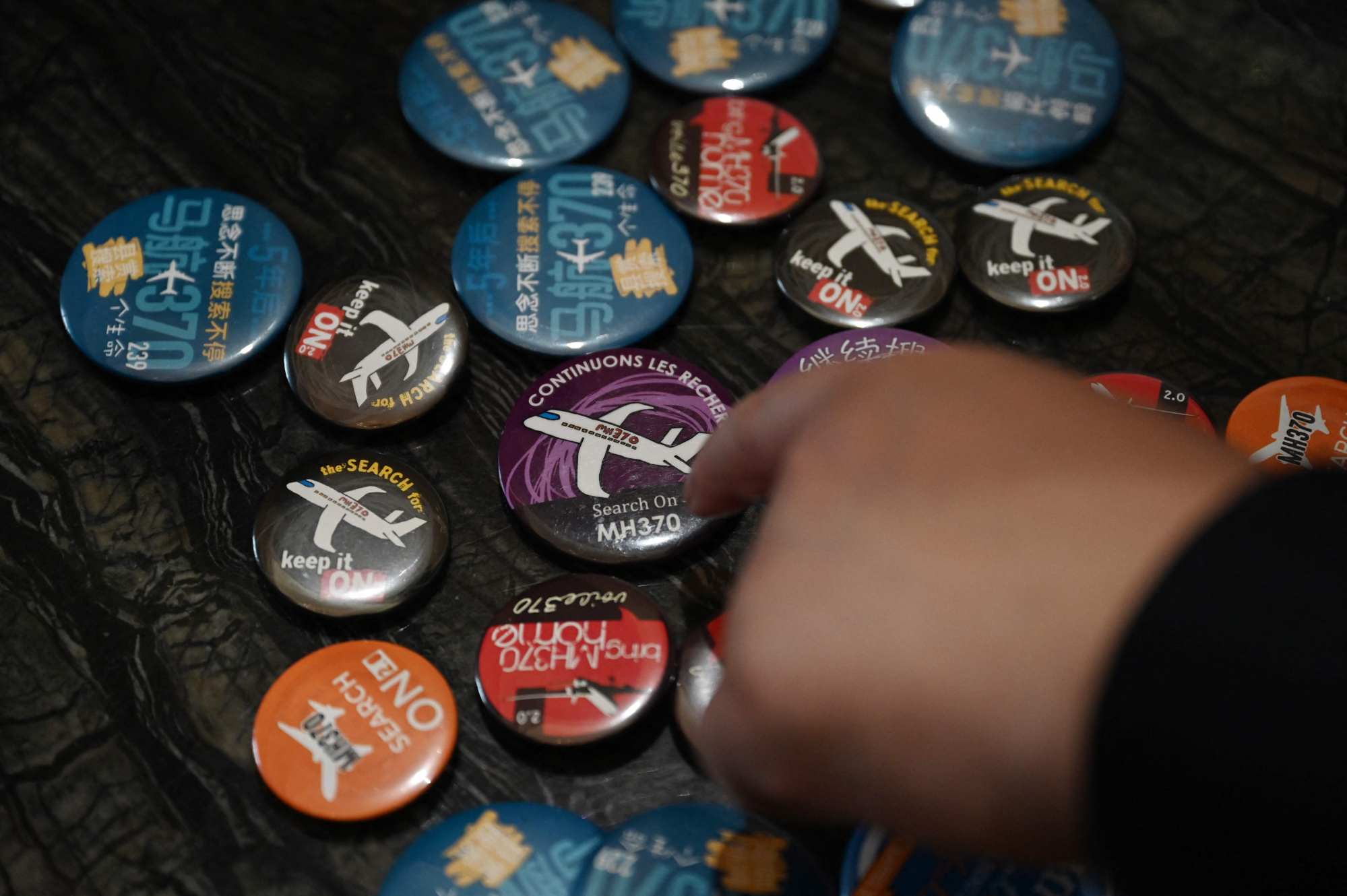Jiang Hui has had many brushes with death in his various expeditions to the African coast to scour for debris from missing Malaysia Airlines flight MH370.
Once, when searching a beach on Réunion, a French island in the Indian Ocean, Jiang narrowly avoided treading on a venomous snake.
Another time, he was swamped and battered by huge waves as he tried to wade through chest-high water to board a boat.
Do you have questions about the biggest topics and trends from around the world? Get the answers with SCMP Knowledge, our new platform of curated content with explainers, FAQs, analyses and infographics brought to you by our award-winning team.
But that all faded when he found a piece of honeycomb-shaped debris in Madagascar.
It was December 2016 and he was part of a trip organised by Voice 370, a support group for MH370 families. Besides three Chinese nationals, there were relatives from France and Malaysia, as well as American explorer Blaine Gibson.
After four connecting flights, a helicopter ride, a long drive along the dunes and a thorough survey of the coastline, Jiang spotted the debris on a beach littered with bottles and flip-flops.
He took the piece back to the Civil Aviation Administration of China for further analysis.
The agency has not said whether the piece belongs to the missing airliner but for Jiang it is more of a token of his resolve to keep searching.
“I hope these governments can see our determination and know that the relatives have not given up, so that they won’t either,” he said at that time.
Jiang’s mother, Jiang Cuiyun, was one of 239 people – including more than 150 Chinese nationals – on board the Boeing 777 jetliner, when it left Kuala Lumpur for Beijing on March 8, 2014. About two hours into the flight, it vanished from radar screens, leaving behind one of the greatest aviation mysteries in history.
MH370: 10 years on, Malaysia’s call for real-time plane tracking still unheeded
Since the incident, the Chinese families have continued to push for a search, haunted by the lack of answers. Their efforts have not borne fruit yet but there is some hope of a revived attempt to find out what happened.
Meanwhile, the Chinese government had learned from handling the aftermath, developing more protocols to control incidents at home as well as providing more resources to Chinese nationals abroad in similar cases.
A decade on, Jiang is visibly older but he is still calm and polite, rarely showing strong emotion.
However, last Sunday afternoon, he grew unusually excited, posting on Weibo, “Just now, the Malaysian Transport Minister agreed to revive the search!”
The minister, Anthony Loke, made the announcement at a remembrance event in Kuala Lumpur in front of relatives from several countries. He said Malaysia was ready to discuss a “no-find, no-fee” deal with deep-sea explorer Ocean Infinity to revive the search for the plane.
After years of advocacy and lawsuits, it was the result the families were hoping for.

Just days before, Jiang and about 10 Chinese relatives had paid what has become a weekly visit to the foreign ministry in Beijing to press their case.
In a meeting room, Jiang raised two requests with ministry staff: he asked for a meeting between the families and the Malaysian prime minister, and annual updates on the case from the Malaysian government.
The families have persisted in these visits to the ministry for the past decade as part of a meticulous plan to induce action. Jiang said he decided there were three ways to push the search forward: through public opinion, lawsuits and diplomatic pressure.
When the news of the disappearance first broke, though, the situation was chaotic and nobody knew which way to go, Jiang said. There were theories the plane had been hijacked, and signs the families interpreted as their loved ones were still alive – including a mysterious call from a missing father to his son’s cellphone, which ended in silence.
“There were all kinds of conmen and conspiracy theories flying around,” said Song Chunjie, whose older sister was on the plane.
Song said the families followed all trails, pursuing any glimmer of hope.
One time, he went with Jiang to the southern city of Shenzhen to see someone who claimed to have vital information – only for it to turn out to be someone who wanted to write a stage show on the plane’s disappearance.
Over the months and years, conspiracy theories became the only things left. Communication with Malaysia Airlines stopped, as did counselling for the families. And in 2016, after Malaysia declared the flight’s disappearance “an accident”, it offered a 2.5 million yuan (US$374,376) settlement for the family of each victim, on the condition that they took no further action against the airline.
The offer nearly divided the families. When a list of people who took the payouts was shared in a WeChat group with family members, many started abusing those who accepted the settlements.
Jiang has always appealed to reason in these disputes, understanding all sides, calling for the families to stand united, never directly arguing with someone who expressed a different view.
In his mind, there could be differences, he said, but their common ground was finding the plane.
But that hope started to dwindle as well.
Planes are full, airfares are high – and AirAsia’s never been more excited
In 2017, a joint search operation by Australia, China and Malaysia, covering 120,000 sq km (46,300 square miles) in the Indian Ocean and costing US$130 million, was called off with no result. A second attempt by Ocean Infinity in 2018 ended with no progress after 90 days.
To keep the quest alive, Jiang and others took matters into their own hands. Over the years, he visited search teams in Australia, and went to Mauritius, Madagascar and Réunion to scour for debris and to implore governments not to give up.
At the same time, relatives started filing lawsuits.
In November last year, a Beijing court began to hear claims for compensation for about 40 families who did not take the settlement. Jiang, among them, sued Malaysia Airlines, its insurer, Boeing and the manufacturers for compensation, a formal apology, the resumption of counselling for the families, as well as the creation of a fund to finance further searches for the plane.
But there remains legal uncertainty about what enforcement power the Chinese court has over the defendants, given the companies are headquartered outside China. Similar cases brought in the United States by the victims’ families have been dismissed on the grounds that these lawsuits should be handled by the Malaysian legal system.
On the diplomatic front, the families have not received much response from the foreign ministry over the years, according to Wang Lan (not her real name), another MH370 family member.
While there has always been someone to listen to them on their weekly visits to the ministry, the requests get buried in paperwork, she says. Seldom is there a follow-up response.

There is also the danger of job losses and frequent visits from community workers to deter them from creating any “social disturbances”.
“Whenever we hold gatherings, there is twice the number of police to family members,” Wang said.
For the government, the disappearance of the aircraft posed a challenge both in domestic stability control and in ensuring the safety and interests of Chinese nationals overseas.
Since then, China has reacted quicker to tamp down public disruption in such cases. In 2022, when China Eastern Airlines flight MU5735 crashed near Wuzhou in Guangxi Zhuang autonomous region, killing all 132 on board, the local government was swift to isolate the relatives, putting them in separate hotels and sending security staff to guard each individual.
Group action among the family members and communication with the media was constrained. When the media went to Wuzhou to report on the disaster, many were banned from the crash site and even a press conference.
At the same time, China has been pushing for more timely support and resources in consular protection cases overseas.
In 2023, China released the first regulation on consular protection, asking local governments to devote more resources to aiding Chinese nationals from their jurisdictions who need help overseas.
Even more could be done in terms of flight safety. A decade later, commercial aircraft still have not fully adopted real-time tracking systems due to the cost and lack of enforcement, experts told the Post earlier.
Most airlines today have installed systems that improve location tracking at 15-minute intervals, but very few have an autonomous distress tracking system that can send data at one-minute intervals when the plane’s operations are compromised, according to experts.
The International Civil Aviation Organisation initially set a January 2021 deadline for airlines to fully install this system, but it was pushed back twice by lack of readiness and the pandemic, now to January 2025.
For Wang, the goal is just to keep going.
On a cold Beijing evening, she goes out dancing in a public square not for leisure, purely for exercise, so she can live longer and wait for the truth.
How barnacles could help solve the mystery of Malaysia Airlines flight MH370
She lost her husband to lung cancer in 2013. A few months later, her son, daughter-in-law and two-year-old grandson took a family trip to Thailand. On the way back, the young couple, worried that the child could not cope with a long direct flight, decided to break the journey with a connecting flight in Malaysia. They never made it home.
“I am 73 now, I don’t know whether I’ll live to see the day [the plane is found],” Wang said. “I don’t usually tell others my pain, they’ll just pity me. I just show people my actions – if there’s one breath left in my body, I will find them.”
“Finding them” is a wish Jiang shares as a son. Jiang said some might not understand why so many families insisted on continuing the search, but in his eyes it was as clear as daylight. It was a simple Chinese concept, he said, instilled in his genes: he has to bring his family home – dead or alive.
For years, Jiang has felt helpless and struggled in his campaign for a search, but now there is finally new hope on the horizon.
“Time is now the only path we have,” he said. “We’ll see who can outlast whom.”
More from South China Morning Post:
- ‘MH370 is not history’: 10 years on, Malaysia seeks to revive Ocean Infinity’s jet search
- A decade after MH370, will the world finally heed Malaysia’s call for real-time tracking of planes?
- A decade after Malaysia Airlines Flight 370 disappeared, planes still at risk of vanishing off the map
- Chinese families of Malaysian flight MH370 victims urge new search after experts say plane could be found ‘within days’
- Malaysian government said MH370 was ‘murder-suicide by pilot’, former Australian PM Tony Abbott claims
For the latest news from the South China Morning Post download our mobile app. Copyright 2024.





